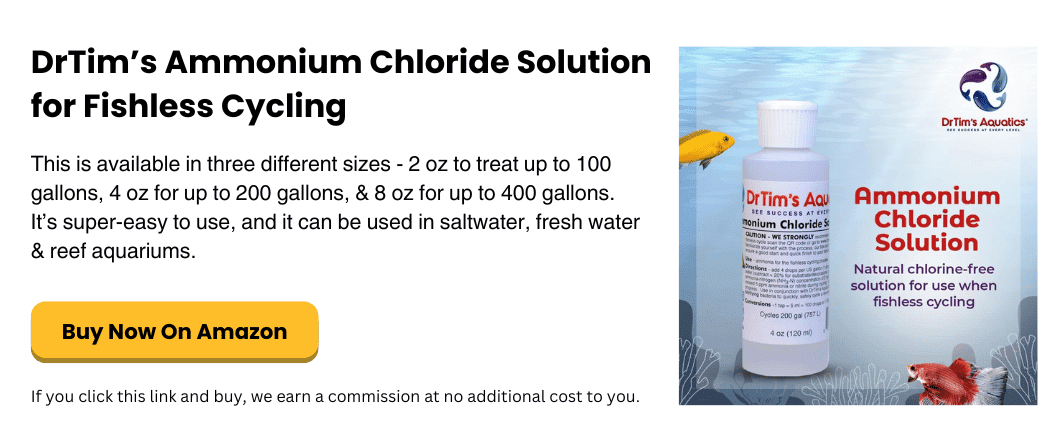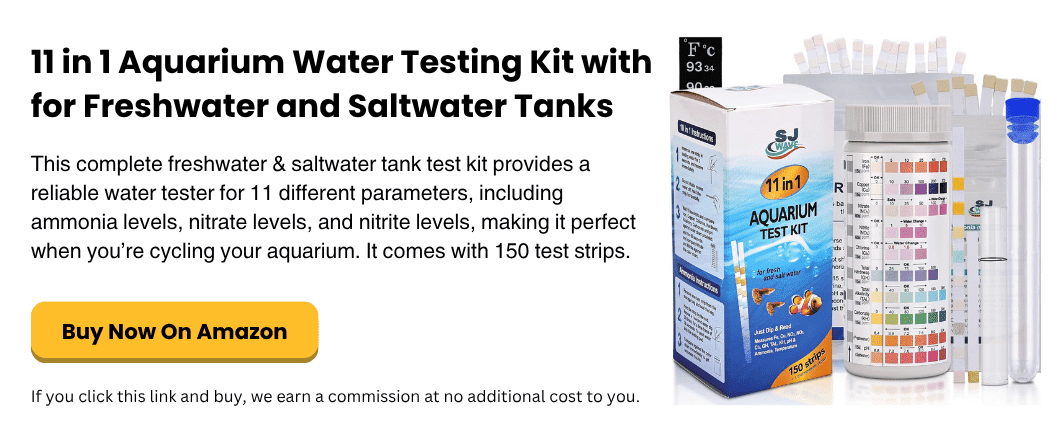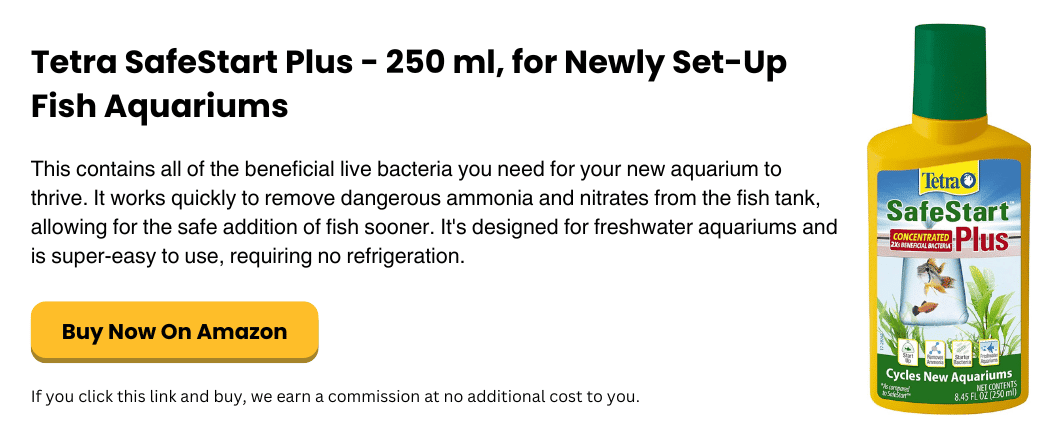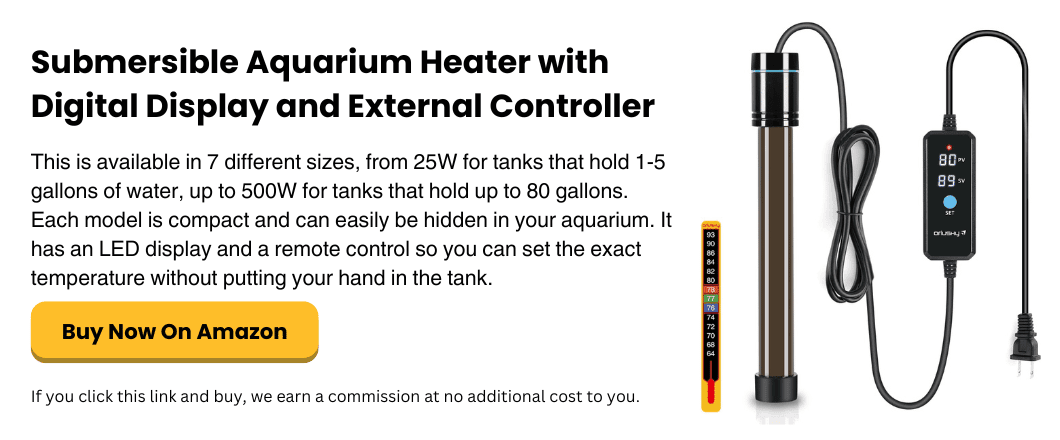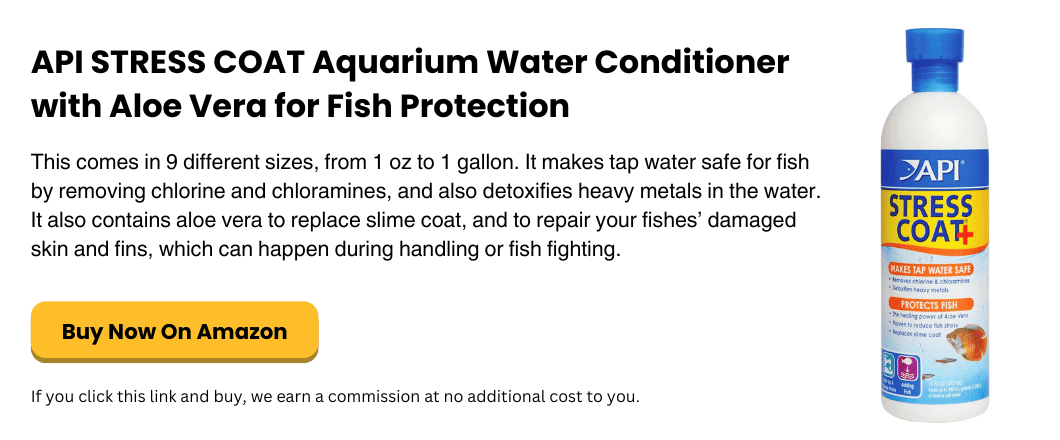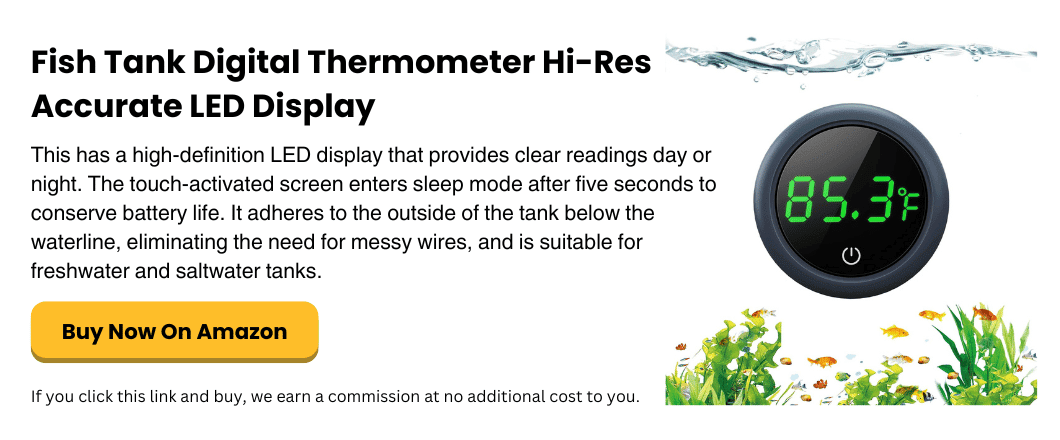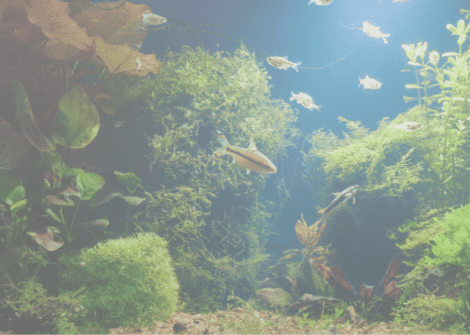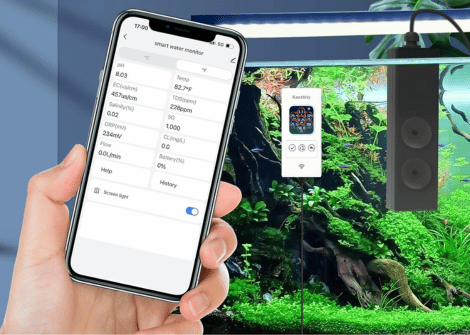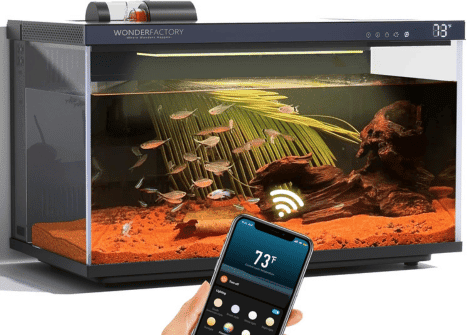Beginner’s Guide to Cycling Your Aquarium the Right Way
Setting up a new aquarium is exciting, but before you add any fish, there’s one crucial step you can’t skip: cycling your tank.
If you’re new to fishkeeping, you might be wondering what cycling even means. Simply put, cycling an aquarium is the process of establishing a healthy colony of beneficial bacteria that will break down fish waste and keep your water safe. It’s the foundation for a successful, long-lasting tank.
Skipping this step or rushing it is one of the most common mistakes new hobbyists make, often leading to stressed or dying fish. Don’t worry though—with the right guidance, cycling your aquarium the right way is totally doable, even for beginners.
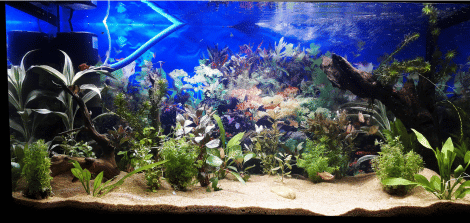
Table Of Contents
What is the Nitrogen Cycle and Why It Matters
Understanding the Cycling Process
How To Fishless Cycle Your Aquarium
How To Add Fish The Right Way
Signs Your Tank Is Fully Cycled
Maintaining A Healthy Cycle
Common Cycling Mistakes To Avoid
Tools That Can Help With Your Cycling
What is the Nitrogen Cycle and Why It Matters
To understand cycling, you need to understand the nitrogen cycle.
- When fish eat, they produce waste, which releases ammonia into the water. Ammonia is highly toxic to fish, even in very small amounts. Luckily, beneficial bacteria come to the rescue here.
- First, one type of bacteria converts ammonia into nitrites. But… nitrites are also toxic!
- Therefore, a second type of bacteria converts nitrites into nitrates, which are much less harmful and can be controlled through water changes and plant absorption.
The key, then, is to have what are called beneficial bacteria in your fish tank. This happens through the process called cycling.
But this process doesn’t happen instantly. It takes time for these bacteria to grow and become established in your tank’s filter, gravel, and other surfaces.
And so, until the cycle is complete, ammonia and nitrite levels can spike, which is dangerous for fish. That’s why cycling your aquarium before adding a full stock of fish is so important.
Understanding the Cycling Process
There are two main ways to cycle an aquarium: fish-in cycling (where you do it while some fish are in the tank) and fishless cycling (where you do it without any fish in the tank).
Fishless cycling is generally recommended, especially for beginners, because it avoids putting live fish at risk.
To do this method, you add a source of ammonia to the water and let the bacteria build up over several weeks.
With fish-in cycling, you add a few hardy fish and monitor water parameters closely, changing the water often to keep them safe. This method takes time and can end up damaging or killing your fish, so it is absolutely recommended to choose the fishless cycling method!
How To Fishless Cycle Your Aquarium
To start, set up your aquarium completely—gravel, decorations, filter, heater, water, and water conditioner. At this stage, be sure you measure out the volume of water you add, as you’ll need to know this when you add the ammonia. Let everything run for up to 24 hours to stabilize. Then, it’s time to add your ammonia source.
There are different types of ammonia you can add:
1. Household Ammonia
Look for bottles labeled as:
-
Pure Ammonia
-
Clear Ammonia
-
Unscented or Fragrance-Free
Check the ingredient list to ensure it contains only ammonium hydroxide and water. You can often find this at grocery or hardware stores. If you’re not sure, shake the bottle—if it foams, it likely has detergents in it and should not be used.
Avoid: Any ammonia labeled as “lemon-scented,” “multi-purpose,” “foaming,” or with added surfactants. These can harm the beneficial bacteria, and they are toxic to fish.
2. Lab-Grade Ammonium Hydroxide
This is a purer form of ammonia used for scientific purposes. It’s more precise but harder to find and may be overkill for most hobbyists. Only use it if you’re confident in measuring exact concentrations.
3. Using Shrimp
You can buy some shrimp at the supermarket, cut them up, and add them to your aquarium. The shrimp then decay, which produces ammonia.
The problem with this method is that you really can’t tell how much ammonia is being produced by the decaying shrimp – and your aquarium doesn’t look very good with dead shrimp laying on the bottom. Also, as the the shrimp decay it can cause bacteria blooms which turn the aquarium water cloudy.
4. Ammonia Products Made for Fishless Cycling
There are special ammonia solutions made especially for fishless cycling, and this is definitely the ammonia source we recommend. That’s because they are safe and pre-measured, so you can’t go wrong. Two popular choices are:
-
Dr. Tim’s Ammonium Chloride Solution
-
Fritz Fishless Fuel Ammonia Solution
How to Add The Ammonia
If you’re using ammonia you bought from the store, then start by adding a few drops at a time and test the ammonia level after each addition. Your goal is to reach 2 to 4 parts per million (ppm).
However, if you’re using a special ammonia solution made especially for fishless cycling, such as Dr. Tim’s Ammonium Chloride Solution, then it’s much easier, as you only need to follow the directions. With Dr Tim’s, for example, you use the dropper to add 4 drops per US gallon (or 1 drop per liter).
Test Regularly
Use a liquid test kit to check ammonia, nitrite, and nitrate levels every day or two. At first, only ammonia will show up. In a few days to a week, nitrites will appear—this means the first group of bacteria is working. Later, nitrates will show up, signaling the second group has joined in.
Keep the Ammonia Level Steady
Whenever the ammonia level drops below 1 ppm, add more to bring it back to around 2–3 ppm. This feeds the bacteria so they keep multiplying. Don’t let the ammonia run out, or you will have wasted all that time – and you’ll have to start again!
Wait for the Cycle to Complete
The cycle is done when ammonia and nitrite both test at zero, and nitrates are present. This usually takes 2 to 6 weeks. Once you’re there, do a large water change (up to 50% of your tank’s water) to bring nitrate levels down before adding fish.
How To Add Fish The Right Way
Once your ammonia and nitrite levels consistently test at zero and you see some nitrates, your tank is ready for fish. But don’t add them all at once.
Start slowly, adding a few fish at a time over several weeks. This gives your bacteria time to adjust to the increased bioload. Dumping too many fish in a newly cycled tank can overwhelm the system and trigger a mini-cycle, putting your new pets at risk.
When adding fish, always acclimate them properly. Put them in a sealed plastic bag and float the sealed bag in the tank for 15 to 30 minutes to match the temperature of the water in the aquarium. Then gradually mix tank water into the bag over the next hour before releasing the fish. This reduces stress and helps your fish adjust to their new home safely.
Signs Your Tank is Fully Cycled
You’ll know your tank is cycled when the ammonia and nitrite levels are consistently at zero, and you have a measurable amount of nitrates. That means your beneficial bacteria are doing their job and converting waste properly. At this point, you can begin adding fish more confidently, always watching your parameters as you go.
If you ever see ammonia or nitrites creep back up, especially after adding new fish, don’t panic. This is usually a mini-cycle and can be managed with extra water changes and careful feeding. Over time, your bacteria will catch up to the increased bioload.
Maintaining a Healthy Cycle
Cycling doesn’t stop once the tank is established. It’s a continuous process. Your beneficial bacteria need stable conditions to thrive.
Avoid completely cleaning or replacing filter media, as this is where most of your bacteria live. Instead, rinse filter media gently in old tank water during water changes. Also, avoid using tap water directly, as the chlorine which is present in tap water can kill off your biofilter.
Keep up with regular maintenance, like weekly water changes, gravel vacuuming, and filter checks. Test your water periodically, especially after adding new fish or changing feeding routines. A healthy, established cycle is your tank’s best defense against water quality problems and fish health issues.
Common Cycling Mistakes to Avoid
New aquarists often make a few common errors during cycling. The big ones are:
- adding too many fish too soon, as this overwhelms the bacteria before they’re ready and puts your fish at risk.
- cleaning the filter too thoroughly or replacing it entirely, which wipes out your bacteria colony.
- using chemicals that kill bacteria, like some medications or untreated tap water, can also disrupt your cycle.
- being impatient, which is a really big one! Everyone wants to add fish right away, but waiting those extra few weeks to complete the cycle pays off in a healthier, more stable aquarium in the long run. If you rush it, you’ll likely spend more time dealing with stress, disease, and cloudy water later.
Tools That Can Help With Your Cycling
Apart from the ammonium solution and the water testing kit we already looked at, there are a few other tools that can greatly help when you’re cycling your water, speeding up the process and making it much easier to do – and to maintain.
Beneficial Bacteria Starters
Beneficial bacteria starters can be a huge help when you’re doing a fishless cycle for the first time.
These products contain live nitrifying bacteria that jump-start the nitrogen cycle, which is essential for breaking down waste in your tank.
Instead of waiting weeks for bacteria to develop naturally, you simply add the starter to your tank along with ammonia, and the bacteria will begin colonizing your filter and substrate—making the tank safe for your fish much sooner.
Aquarium Heater
A water heater is a surprisingly important tool when doing fishless cycling. That’s because the beneficial bacteria that help establish the nitrogen cycle grow best in warmer water—ideally between 75°F and 80°F.
If your tank water is too cool, the cycle can take much longer to complete.
So using an aquarium heater helps keep the temperature stable in that ideal range, speeding up the process and making it easier to get your tank ready for fish. It’s a simple, affordable way to help everything run more smoothly from the start.
Water Conditioners
Water conditioners can really help anyone starting a fishless cycle. That’s because tap water often contains chlorine or chloramine, which can harm the beneficial bacteria you’re trying to grow.
A good water conditioner, on the other hand, neutralizes these chemicals, making the water safe for cycling. It also helps protect your aquarium from ammonia spikes during the early stages.
By treating your water properly from the start, you’ll give your beneficial bacteria the best chance to thrive and make the cycling process smoother and more successful.
Aquarium Thermometer
Final Thoughts
More Reading
Cloudy water in your aquarium can be a real worry. Our guide shows what is causing the cloudy water, how to clear it – and how to keep it permanently clear and clean.
Our guide gives you all you need to know about these all-in-one Smart Monitors: They measure multiple water quality parameters, such as pH, Specific Gravity, and Salinity, and send the info to your phone 24/7.
Using smart tech with your aquarium can make your life a lot easier, and makes owning fish a lot more enjoyable. Our guide shows you how it can really help.

